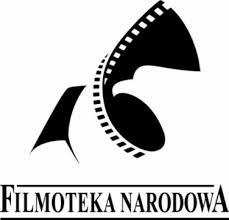The first activities leading towards assembling the heritage of Polish cinema heritage were initiated just after the Second World War. In 1947 Jerzy Toeplitz started to gather the copies of films that had survived the destruction of the Polish cultural institutions during the Nazi occupation. This first collection was officially registered at the International Federation of Film Archives (FIAF) and in 1955 served as a basis for the newly created Film Archive. This initial period was mostly dedicated to quest Polish pre-war productions, dispersed in Poland and abroad. What is more, other countries associated with FIAF donated some foreign post-war films to the Film Archive in Warsaw.
During the next decades, the Film Archive concentrated on popularising cinematography, both Polish and European. Cinemas, such as “Iluzjon” and “Kultura” in Warsaw, hosted multiple screenings and film festivals. Films banned from being publicly shown, so-called “półkowniki” (Polish word for “films laying on the shelves”), were also a part of the Film Archive, i.e.: “Blind chance” (directed by Krzysztof Kieślowski, 1981), “By the railroad” (Andrzej Brzozowski, 1963), “Interrogation” (Ryszard Bugajski, 1982). However, only prominent party officias could see the films banned from public display during closed, private screenings. Copies of those films were hidden in the archive, only to be shown in the 1990s, after the collapse of the communism.
Relatively stable situation within the Polish cinematography started to change after 1989. Before the transformation, even with more or less strict control of the cinema production, filmmakers had some support from the authorities. Their relationship to the state institutions varied and changed in time – some of them were openly contesting the state policies, others decided to emigrate or to use symbols and innuendos in their productions in order to show their perspective. After 1989, the end of censorship coincided with opening of the Polish film market to Western productions and to private film studios. The National Film Archive (this name was given to the Film Archive in 1987) started to acquire materials and films from the shut down state film studios, such as “Zodiak”, “Dom i Profil”, “Studio Małych Form Filmowych Se-Ma-For” or film production houses in Łódź and Wrocław. In 2006 the National Film Archive signed an agreement with The Warsaw Documentary and Fabular Film Studio (Wytwórnia Filmów Dokumentalnych i Fabularnych (WFDiF)) and acquired all its collections, later organised as one big collection of “Chełmska Archive” (Chełmska is the name of the street where WFDiF is situated).
In the same time, the National Film Archive was receiving more and more film materials from different sources and institutions. Its storage capacity started to shrink. In 2000 the Congress of Polish Culture named the National Film Archive as an institution the most endangered with loosing and deteriorating existing collections. This tragic situation led to intensifying the digitalisation and archiving activities. Since 2008, web services such as “Fototeka – virtual collection of Polish cinema” (www.fototeka.fn.org.pl ), “Digital Repository” (www.repozytorium.fn.org.pl) and “GAPLA – the gallery of film poster” (www.gapla.fn.org.pl) have been developed. Simultaneously, the National Film Archive begun creating the Central Catalogue for all its collections. In November 2017, the Catalogue had already included 75% of the National Archive collections and due to this reason - was not openly accessible yet. Since 2013 the National Film Archive's magnetic tapes with soundtracks of Polish films produced from 1950 to 1970 have been consequently digitalised.
The National Film Archive is very active in the field of film education. It manages programs such as the School Film Archive and the Academy of Polish Film, as well as organizes an annual competition within Cinema Studies for pupils. In June 2017, the National Film Archive and National Audiovisual Institute were united in one institution: National Film Archive - Audiovisual Institute.

